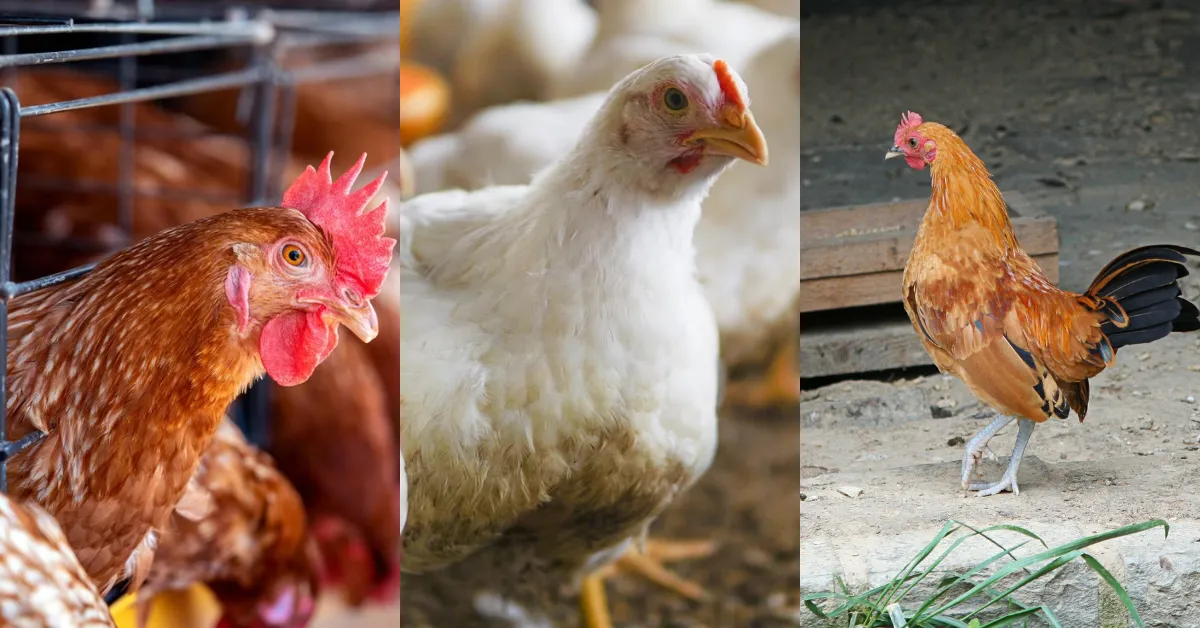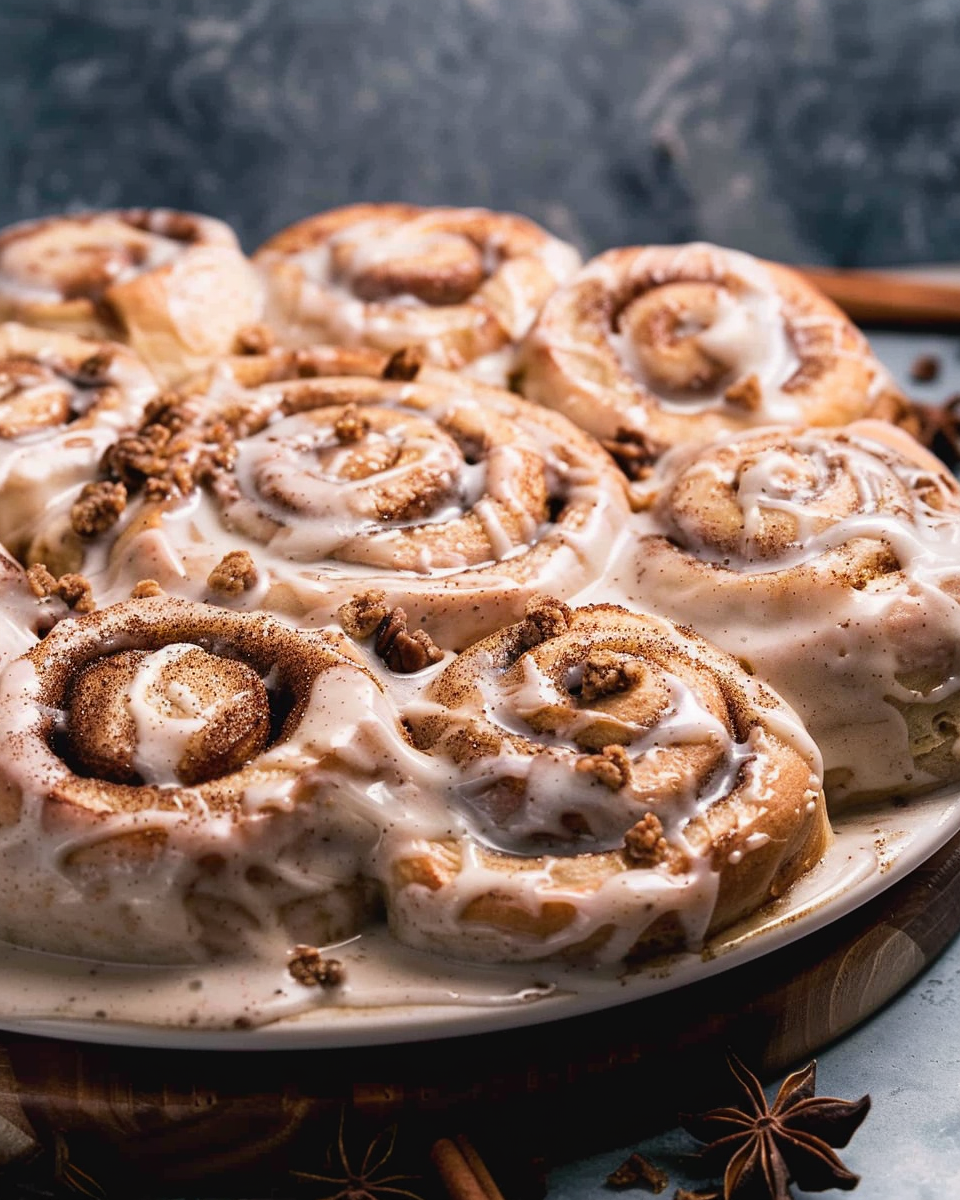Chickens, often seen clucking around in backyards or gracing our dinner plates, have a rich history intertwined with human civilization. From ancient times, these birds have played a pivotal role in our lives, be it for food, entertainment, or even spiritual purposes.
Historical Background of Chickens
The domestication of chickens dates back thousands of years. Ancient civilizations, from the Indus Valley to the Romans, have records of chicken farming, showcasing their importance in daily life.
Importance of Chickens in Human Civilization
Chickens have always been more than just a source of food. In many cultures, they hold spiritual significance, are used in rituals, and even as a form of currency. Their feathers have adorned hats, and their fights have been a source of entertainment.
What Are The 3 Types Of Chicken?
Chickens, one of the most commonly reared poultry birds worldwide, can be primarily categorized into three types based on their purpose and characteristics:
Broilers:

These are chickens bred primarily for meat production. They have a rapid growth rate and are typically ready for the market in about six to seven weeks. Broilers have a robust physique with a broad breast and a compact body. They are often heavier than other types of chickens and are reared in conditions that promote fast growth. Their tender meat is a favorite in many dishes, especially in whole fried chicken recipes.
Layers:

As the name suggests, layers are bred for egg production. They start laying eggs when they are about five to six months old and can continue producing eggs for several years. Layers have a more streamlined body compared to broilers and are specifically bred to produce a large number of high-quality eggs. They are usually kept in conditions that optimize their egg-laying capacity. Eggs are a versatile ingredient, essential in many dishes, from cakes to pastas.
Bantams:

Bantams are often referred to as the show birds of the chicken world. They are smaller in size compared to broilers and layers and are primarily kept for ornamental or show purposes. Bantams come in a variety of beautiful colors and patterns, making them popular among poultry enthusiasts. They are also sometimes kept for their eggs, although they produce smaller eggs compared to standard layers.
In summary, while all chickens belong to the same species, they are bred for different purposes, leading to the primary categorization of broilers, layers, and bantams. Each type has its unique characteristics and care requirements.
Chicken Breeds and Varieties
When embarking on the journey of chicken rearing or simply indulging in the world of poultry, understanding the various breeds and varieties is paramount. Chickens, like any other species, come in a myriad of shapes, sizes, and purposes. This section will shed light on some of the most popular breeds for each type of chicken and guide you in selecting the right breed for your specific needs.
Popular Breeds for Each Type
Broilers:
- Cornish Cross: Known for its rapid growth and meaty physique, the Cornish Cross is a favorite among meat producers.
- Freedom Ranger: This breed is often chosen for its ability to forage and its slower growth rate compared to the Cornish Cross.
Layers:
- White Leghorn: A prolific egg layer, the White Leghorn is recognized for its white eggs and hardy nature.
- Rhode Island Red: Renowned for its brown eggs, this breed is both hardy and versatile.
Bantams:
- Sebright: With its laced feather pattern, the Sebright is a popular choice for poultry shows.
- Silkie: Known for its fluffy plumage and friendly demeanor, the Silkie is a favorite among bantam enthusiasts.
Selecting the Right Breed for Your Needs
Transitioning from understanding the breeds to selecting one can be a daunting task. However, the key lies in identifying your primary purpose. Are you looking for a meat producer, an egg layer, or a show bird?
For meat production, breeds that grow quickly and have a meaty build, like the Cornish Cross, are ideal. If egg production is your goal, then breeds like the White Leghorn, known for their prolific egg-laying capabilities, might be your best bet. On the other hand, if you’re venturing into the world of poultry shows, the aesthetic appeal and unique characteristics of bantams like the Sebright or Silkie might catch your eye.
Furthermore, consider factors like climate adaptability, feed efficiency, and temperament. For instance, if you reside in a colder region, you might want a breed that’s more cold-hardy.
In conclusion, the world of chicken breeds is vast and varied. By understanding the nuances of each breed and aligning them with your goals, you can make an informed decision that benefits both you and your feathered friends.
Health and Nutrition of Chickens
Chickens, like all living creatures, require proper care and nutrition to thrive. Their health and well-being are intrinsically linked to the quality of their diet and the environment in which they live. This section delves into the essential aspects of chicken health and nutrition, highlighting common health issues and the nutritional requirements necessary for optimal growth and productivity.
Common Health Issues
Chickens, despite their hardy nature, can be susceptible to a range of health issues:
- Avian Influenza (Bird Flu): A viral infection that can spread rapidly in flocks, leading to respiratory distress, decreased egg production, and even death.
- Marek’s Disease: A viral disease causing tumors in various organs, paralysis, and often proving fatal.
- Coccidiosis: Caused by protozoa, this disease affects the chicken’s intestines, leading to bloody stools, lethargy, and reduced growth.
- External and Internal Parasites: Chickens can be plagued by mites, lice, and worms, which can reduce productivity and overall health.
- Bumblefoot: A bacterial infection in the foot, often caused by cuts or injuries, leading to swelling and lameness.
Regular health checks, proper sanitation, and timely vaccinations can help mitigate these issues and ensure a healthy flock.
Nutritional Requirements
The foundation of a chicken’s health lies in its nutrition. A balanced diet is crucial for growth, egg production, and overall vitality:
- Proteins: Essential for growth and feather development. Layers require a higher protein intake during their egg-laying phase.
- Carbohydrates: The primary energy source for chickens, usually derived from grains like corn and wheat.
- Fats: Provide concentrated energy and are essential for the absorption of certain vitamins.
- Vitamins and Minerals: Vital for bone development, blood clotting, and overall metabolism. Calcium, for instance, is crucial for eggshell formation in layers.
- Water: Often overlooked, but chickens need a constant supply of clean water for digestion, temperature regulation, and metabolic processes.
It’s worth noting that the nutritional needs of chickens vary based on their age, type (broiler, layer, or bantam), and purpose (meat production, egg-laying, or show). Commercial feeds are often formulated to cater to these specific needs, but if you’re mixing your feed, it’s essential to ensure a balanced diet.
In conclusion, the health and nutrition of chickens are intertwined. By providing a balanced diet, regular health checks, and a clean environment, you can ensure a thriving and productive flock. Whether you’re a backyard hobbyist or a commercial farmer, understanding and prioritizing the health and nutrition of your chickens is paramount.
Chicken Behavior and Social Structure
Chickens, often perceived as simple farm animals, exhibit a range of behaviors and have a complex social structure. Understanding these behaviors can provide insights into their well-being, social dynamics, and overall health.
Understanding Chicken Behavior
- Pecking Order: One of the most well-known aspects of chicken behavior is the “pecking order.” This hierarchical system determines which birds have access to resources first. Chickens establish this order through mild aggressive behaviors, and once established, it helps reduce overall aggression within the flock.
- Dust Bathing: Chickens can often be seen rolling around in the dirt, fluffing their feathers, and then shaking off. This behavior, known as dust bathing, helps them get rid of parasites and keeps their feathers clean.
- Foraging: Chickens are natural foragers. Given the opportunity, they will spend a significant amount of their day scratching the ground in search of insects, seeds, and other edibles.
- Broodiness: Some hens exhibit a behavior called broodiness, where they insist on sitting on their eggs to hatch them. During this period, they might become more aggressive and will rarely leave the nest.
- Roosting: Chickens have a natural instinct to roost or perch off the ground during the night. This behavior is believed to be an evolutionary trait to keep them safe from ground-based predators.
Social Dynamics in a Flock
- Group Cohesion: Chickens are social animals and prefer to live in groups. They form bonds with flock mates and can become distressed if separated.
- Communication: Chickens communicate using a variety of vocalizations. For instance, a hen might have a specific cluck for calling her chicks, while roosters often crow to assert their territory.
- Mating Rituals: Roosters perform a dance, often circling a hen while making specific sounds, as part of their mating ritual. Hens can accept or reject these advances.
- Raising Offspring: After hatching, mother hens are highly protective of their chicks. They teach them to forage and often call them when they find food.
- Handling Stress: Chickens can become stressed due to factors like overcrowding, loud noises, or the presence of predators. Signs of stress include reduced egg production, feather pecking, and increased aggression.
In summary, chickens are far more complex than they might appear at first glance. Their behaviors and social structures are intricate, shaped by both evolutionary needs and environmental factors. Recognizing and understanding these behaviors can greatly aid in providing optimal care and ensuring a harmonious flock.
Economic Impact of Chicken Farming
Chicken farming, a cornerstone of the global agricultural industry, has experienced exponential growth over the past few decades. Its economic impact is vast, influencing not just the agricultural sector but also the broader global economy. From job creation to food security, the ripple effects of chicken farming are felt in various spheres. This section delves into the economic significance of chicken farming, exploring its contribution to global production statistics and the economic benefits it brings.
Global Chicken Production Statistics
The sheer scale of chicken production worldwide is staggering:
- Volume: As of recent data, over 60 billion chickens are raised annually worldwide, making it the most widely consumed meat.
- Economic Value: The global poultry industry, dominated by chicken farming, is valued at hundreds of billions of dollars.
- Export and Trade: Chicken meat and eggs are among the top agricultural exports for many countries, driving trade balances and fostering international relations.
Economic Benefits of Rearing Chickens
Chicken farming offers a plethora of economic advantages:
- Job Creation: From farm workers to processing plant employees, veterinarians to feed suppliers, the poultry industry creates millions of jobs globally.
- Low Investment, High Returns: Compared to other livestock, chickens require relatively lower initial investment. They grow faster, have high feed-to-meat conversion rates, and can start producing eggs within months.
- Food Security: Chickens provide a consistent source of protein through meat and eggs, playing a crucial role in addressing global food security concerns.
- Diversification for Farmers: For small-scale farmers, integrating chicken farming with other agricultural activities can diversify income sources and reduce economic risks.
- Supply Chain Development: The poultry industry has led to the growth of ancillary industries like feed production, equipment manufacturing, and logistics, further bolstering economic growth.
Challenges and Considerations
While the economic benefits are substantial, chicken farming also presents challenges:
- Market Fluctuations: Prices of chicken meat and eggs can be volatile, influenced by factors like feed prices, disease outbreaks, and global trade policies.
- Environmental Concerns: Large-scale chicken farming can lead to environmental issues, including waste management challenges and greenhouse gas emissions.
- Ethical and Welfare Concerns: The rise of factory farming has sparked debates about animal welfare, leading to calls for more humane and sustainable farming practices.
In summary, the economic impact of chicken farming is profound, shaping global trade patterns, influencing national economies, and providing livelihoods for millions. As the demand for chicken products continues to grow, it’s essential to balance economic gains with sustainable and ethical practices, ensuring a prosperous and responsible future for the industry.
Ethical Considerations in Chicken Farming
Chicken farming, like other forms of animal agriculture, comes with its set of ethical considerations. As the demand for poultry products has grown, so has the scale of production, leading to various practices that have raised ethical concerns. Addressing these concerns is crucial for the well-being of the chickens and the sustainability of the industry.
1. Living Conditions
- Battery Cages: Many commercial egg-laying hens are kept in battery cages, small wire cages stacked in rows and columns. These cages often provide very little space for the hens, restricting their movement and natural behaviors like dust bathing and foraging.
- Overcrowding: Both broilers (meat chickens) and layers can be subjected to overcrowded conditions, leading to stress, disease outbreaks, and aggressive behaviors.
2. Fast Growth and Health Issues
Modern broilers have been bred to grow rapidly to reach slaughter weight in a short time. This rapid growth can lead to health issues like heart problems, lameness, and other metabolic diseases.
3. Debeaking
To prevent aggressive pecking and cannibalism in crowded conditions, chicks might undergo debeaking, where a portion of their beak is removed. This procedure can be painful and can affect their ability to eat and forage.
4. Forced Molting
In some egg production systems, hens are subjected to forced molting to rejuvenate their egg-laying capacity. This involves withholding food, water, or both to induce a molt. It’s a stressful process that can affect the health and well-being of the hens.
5. Culling of Male Chicks
In egg production, male chicks are considered economically unviable since they don’t lay eggs. As a result, millions of male chicks are culled shortly after hatching, raising significant ethical concerns.
6. Use of Antibiotics
The use of antibiotics, especially as growth promoters or in preventive doses, has been a controversial practice. Overuse can lead to antibiotic-resistant bacteria, posing a threat to both animal and human health.
7. Slaughter Methods
The methods used to slaughter chickens can vary, with some being more humane than others. Ensuring a quick and painless death is an ethical responsibility.
8. Sustainable and Ethical Farming Practices
Many farmers and organizations are advocating for more humane and sustainable farming practices. These include:
- Free-Range and Pasture-Raised Systems: These systems allow chickens to roam outdoors, exhibiting natural behaviors.
- Organic Farming: Avoids the use of synthetic chemicals and often provides better living conditions for the chickens.
- Agroforestry: Integrating chicken farming with tree planting can benefit both the environment and the chickens.
In summary, ethical considerations in chicken farming revolve around the well-being of the chickens and the sustainability of farming practices. As consumers become more aware, there’s a growing demand for ethically produced poultry products, pushing the industry towards more humane practices.
FAQs
What are the types of chicken? Chickens are categorized mainly as broilers (meat producers), layers (egg producers), and bantams (ornamental). Each type serves a distinct purpose in poultry farming.
How many types of chicken do we have? Primarily, there are three main types of chickens: broilers, layers, and bantams. However, numerous breeds exist within these categories.
What are the 5 types of chicken and poultry? Besides chickens, poultry includes turkeys, ducks, geese, quails, and pigeons. Chickens themselves have broilers, layers, and bantams as main types.
What are the 7 classifications of chicken? Chickens are classified based on purpose and breed. The seven classifications are: egg-laying, meat-producing, dual-purpose, bantam, ornamental, game, and miscellaneous breeds.
Conclusion: The Versatility of Chickens
Chickens, often seen as humble farm animals, are in fact creatures of remarkable versatility. Their presence in human history is not just a testament to their utility, but also to their adaptability and the diverse roles they play in various cultures and societies.
From the bustling markets of Asia, where they are revered for both their meat and their ornamental beauty, to the vast industrial farms of the West, where they are key players in the food industry, chickens have proven their ability to thrive in a myriad of environments. Their roles are not just limited to being providers of food. In many cultures, they hold spiritual and symbolic significance, representing values such as courage, vigilance, and fertility.
Their behavioral intricacies, from the establishment of the pecking order to their communal dust baths, showcase a social structure that is both complex and fascinating. These behaviors are not just instinctual but are also shaped by the environments they are reared in, further highlighting their adaptability.
Moreover, the recent shift towards ethical and sustainable farming practices underscores the evolving relationship between humans and chickens. As we become more aware of their needs and the conditions they thrive in, there’s a concerted effort to ensure their well-being, further solidifying the bond that has existed for millennia.
In the realms of agriculture, economy, culture, and even art, the influence of chickens is undeniable. Their versatility goes beyond their categorizations as broilers, layers, or bantams. They are symbols of resilience, adaptability, and enduring significance in the tapestry of human civilization.
In wrapping up, it’s clear that chickens are not just mere poultry. They are a testament to the symbiotic relationship between humans and the animals they domesticate, showcasing a shared journey of growth, understanding, and mutual respect.









